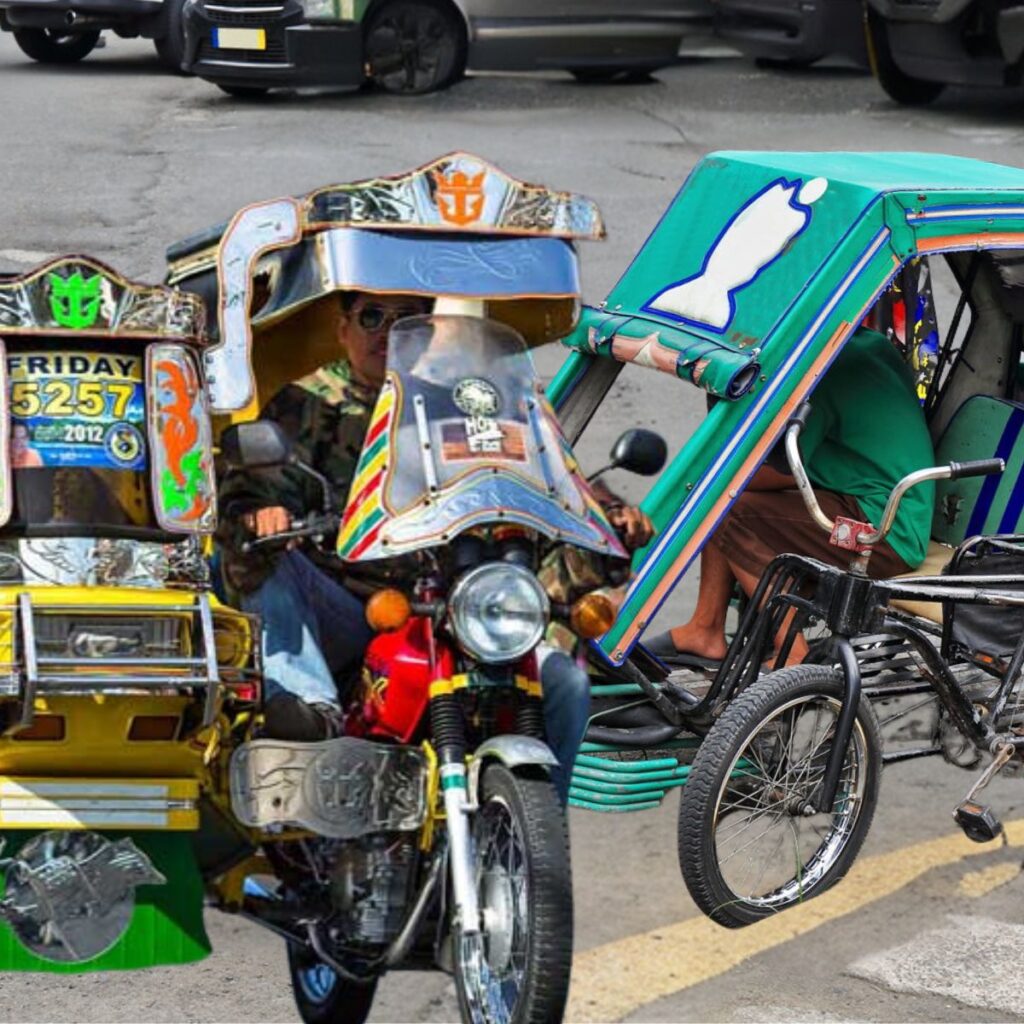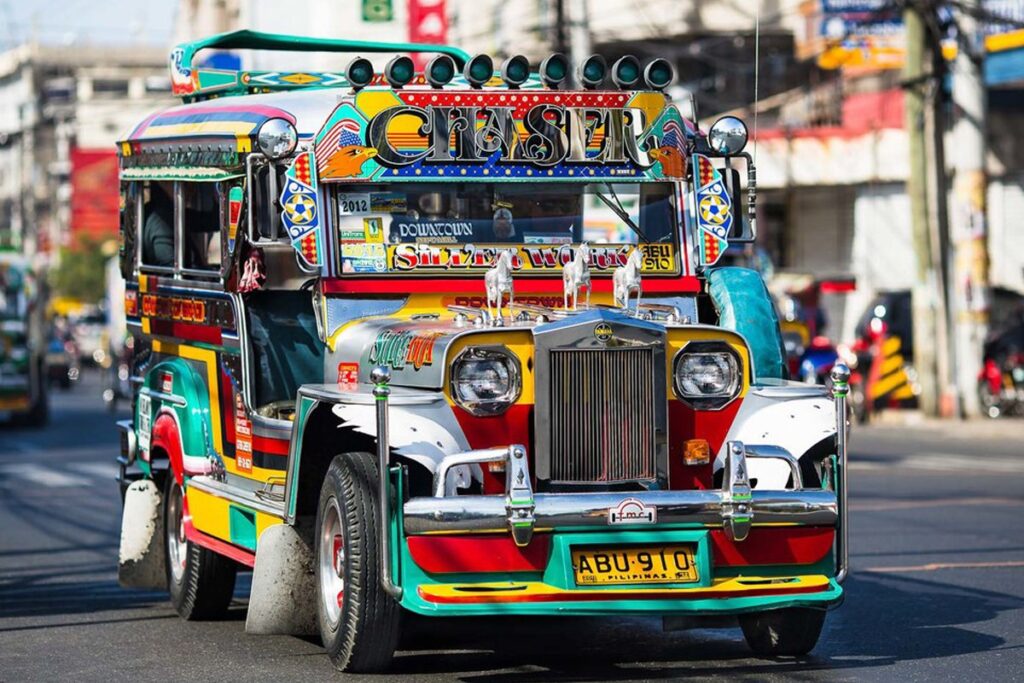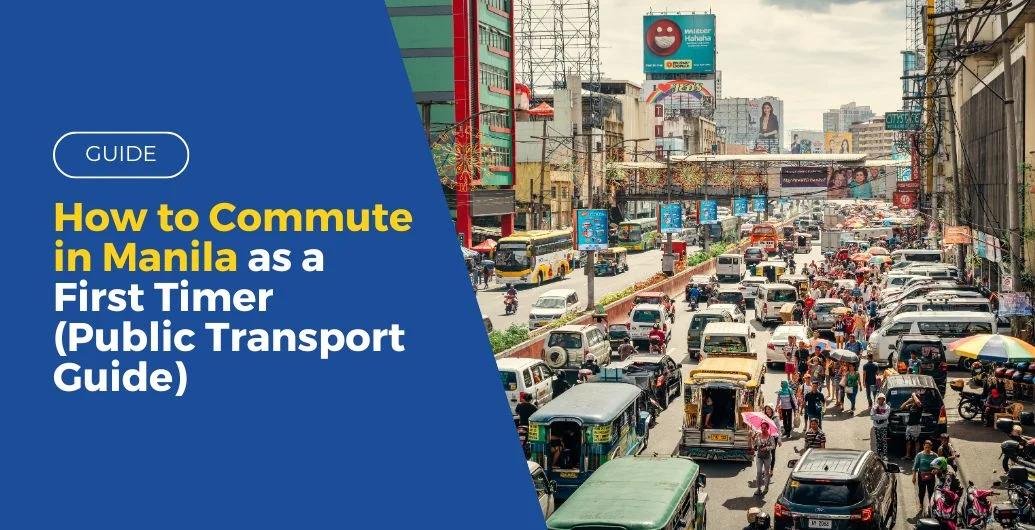As a first-timer or visitor, you may have heard a lot about commuting in Manila and are worried. Still, Manila attracts low-cost carriers and adventurous travelers who want to discover the Philippines’ beaches, jungles, and culture.
Are you considering making your first trip to Metro Manila but need help figuring out how to get around the city? This article provides an overview of the city’s public transportation.
Table of contents
Transportation in Manila
Metro Manila’s busy streets and multiple transport networks can make daily travel difficult for commuters. Understanding the metro’s transportation options will help you navigate Manila faster.
Buses

EDSA Carousel bus system
An alternative to conventional buses, the EDSA Carousel bus system offers more organized and effective transportation along EDSA. Average commuters in Manila’s surrounding residential areas and condominiums, such as Quantum Residences and The Grand Midori Ortigas from Federal Land, can efficiently utilize this system thanks to its designated bus stations.
Paranaque Integrated Terminal Exchange (PITX)
A modern transportation hub, the Parañaque Integrated Terminal Exchange (PITX) arranges multiple bus routes that cater to different provinces in Metro Manila. In addition to provincial buses, jeepneys and city buses can be accommodated at PITX. Lawton, Buendia, Divisoria, Quiapo, Sucat, Pasay, Cubao, Alabang, and Las Piñas City are typical destinations.
Point-to-Point (P2P) buses
In Metro Manila, point-to-point (P2P) buses are getting increasingly popular since they provide direct routes to specific locations without any stops. The arrival and departure are typically next to well-known malls in the city. Here are some of them:
- Alabang Town Center to Market! Market!
- Market! Market! to Alabang Town Center
- Alabang Town Center to Greenbelt 1
- Greenbelt 1 to Alabang Town Center
- Alabang South Station to Robinsons Galleria
- Robinsons Galleria to Alabang South Station
- Alabang Town Center to Lawton
- Lawton to Alabang Town Center
- Ayala Malls South Park to Greenbelt 5
- Greenbelt 5 to Ayala Malls South Park
- SM North to SM Megamall
- SM Megamall to SM North
- Trinoma to Park Square
- Park Square to Trinoma
- Southmall Las Pinas to Makati Circuit Lane
- Makati Circuit Lane to Southmall Las Pinas
- U.P. Town Center to Glorietta 3
Local tip: If you can’t afford to be late for your scheduled trip, go early to the designated terminals because there are usually long lines of commuters waiting.
Train Lines

Most commuters in Metro Manila choose to take trains to reduce journey time due to the city’s congested traffic conditions. In Manila, there are now three quick lines in use. These are the Light Rail Transit (LRT) Line 1, LRT Line 2, MRT (Metro Rail Transit) Line 3, and the Philippine National Railways (PNR), which serves commuters traveling from the province of Laguna to Manila and back.
Local tip: If you’re an occasional visitor, purchase single journey cards for your train rides. Also, take time to study the route of each train line so you’ll know the station where you’ll go down.
Tricycle and Pedicab vehicles

Learning to commute shorter distances within Metro Manila cities, tricycles (motorcycles with sidecars) or pedicab vehicles (bicycles with sidecars) are cheaper alternatives to taxi cabs. Primarily, these kinds of vehicles are used by passengers within subdivisions or areas not reachable by jeepneys.
There are two ways to ride the tricycle – pay a standard fare and join a group of commuters inside the vehicle or rent the vehicle all to yourself; the price depends on your negotiations with the driver.
Local tip: Make sure to have small bills to pay the exact amount.
Also Read: Honest tricycle driver in Butuan returns P300,000 to passenger
Taxi

If you don’t want to ride on public trains and utility vehicles, you can hail a cab anywhere commuting in Metro Manila. However, expect that it’s an expensive mode of transportation. These white-colored cars with yellow-colored plates have a predetermined flag-down rate of 40 Philippine pesos and an additional charge per kilometer and waiting time on the road. While these cars are available anywhere, it’s hard to find one during peak hours.
Local tip: Unfortunately, some drivers tend to “forget” to turn on the taxi meter and offer a fixed trip rate instead. To avoid being scammed, remind drivers to turn on the meter if you’ve noticed that it’s not yet running.
Jeepneys

Of course, jeepneys are the cheapest alternative to the modes mentioned above for commuting in Manila. Known to be an iconic symbol of the Philippines, you’ll find them painted in bright colors and adorned with elaborate accessories.
Some jeepneys even parade through the streets, blasting their loudspeakers with either humorous dance music or heartbreaking Filipino songs. However, due to the Philippine Modernization Program, these types of jeepneys that Filipinos have known for decades will soon be replaced by modern, eco-friendly public utility vehicles.
Local tip: Say “para” or “para po” to inform the driver that you’re about to go down the jeepney. If you’re seated near the driver, help other commuters hand over their fares to the driver.
Also Read: PH replaces traditional jeepneys with Chinese imports
Frequently Asked Questions (FAQs)
Is it hard to commute in Manila?
Commuting in Manila can be challenging due to the city’s busy streets and multiple transport networks. However, navigating Manila can become more accessible with a proper understanding of available transportation options.
What is commuting in the Philippines?
For millions of Filipinos, commuting is just part of daily life. It requires navigating the clogged streets and roads of big cities like Manila, Cebu, and Davao using a variety of public transit options, including buses, jeepneys, tricycles, and trains.
Why is commuting difficult in the Philippines?
Commuting in the Philippines can be difficult due to various factors such as traffic congestion, limited infrastructure, and the presence of multiple transport options which can sometimes be overwhelming for first-time travelers.
What is public transportation in Metro Manila?
Public transportation in Metro Manila includes various options such as buses (including the EDSA Carousel bus system, PITX, and point-to-point buses), train lines (LRT Line 1, LRT Line 2, MRT Line 3, and PNR), tricycle and pedicab vehicles, taxis, and jeepneys. Each mode of transportation serves different purposes and routes, providing commuters with a range of choices depending on their destination and preferences.
Final Thoughts
Manila’s crowded streets and varied transport networks make commuting difficult for first-timers. However, this guide covers Philippine public transit, making city navigation easier. It includes suggestions for buses, trains, tricycles, pedicabs, taxis, and jeepneys. Knowledge and preparation make Manila commuting manageable despite the hurdles. Travelers can effectively navigate the city and see its colorful culture and sights by understanding the many transit alternatives and using local suggestions. There are options for every traveler, from jeepneys for affordable rides to point-to-point buses for direct routes. With this guide, first-timers to Metro Manila may confidently explore and appreciate its attractions.
Keep Reading: GUIDE: A Comprehensive Guide to Travel Insurance in the Philippines

Leave a Reply